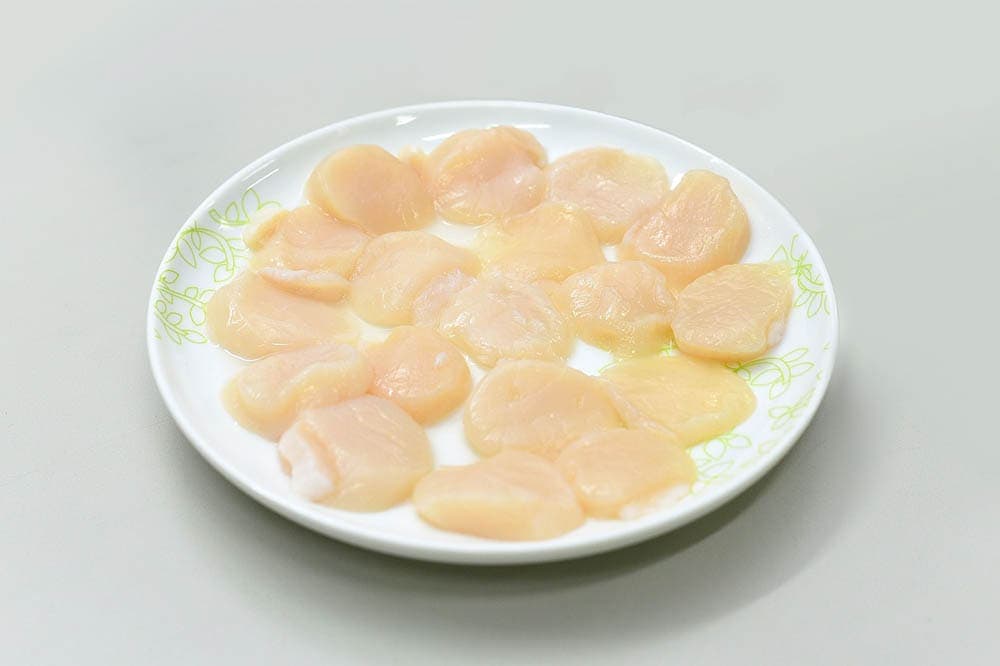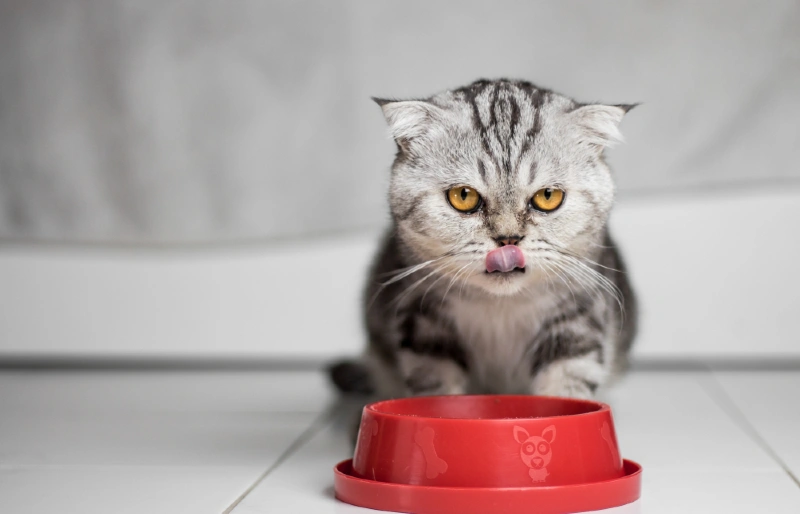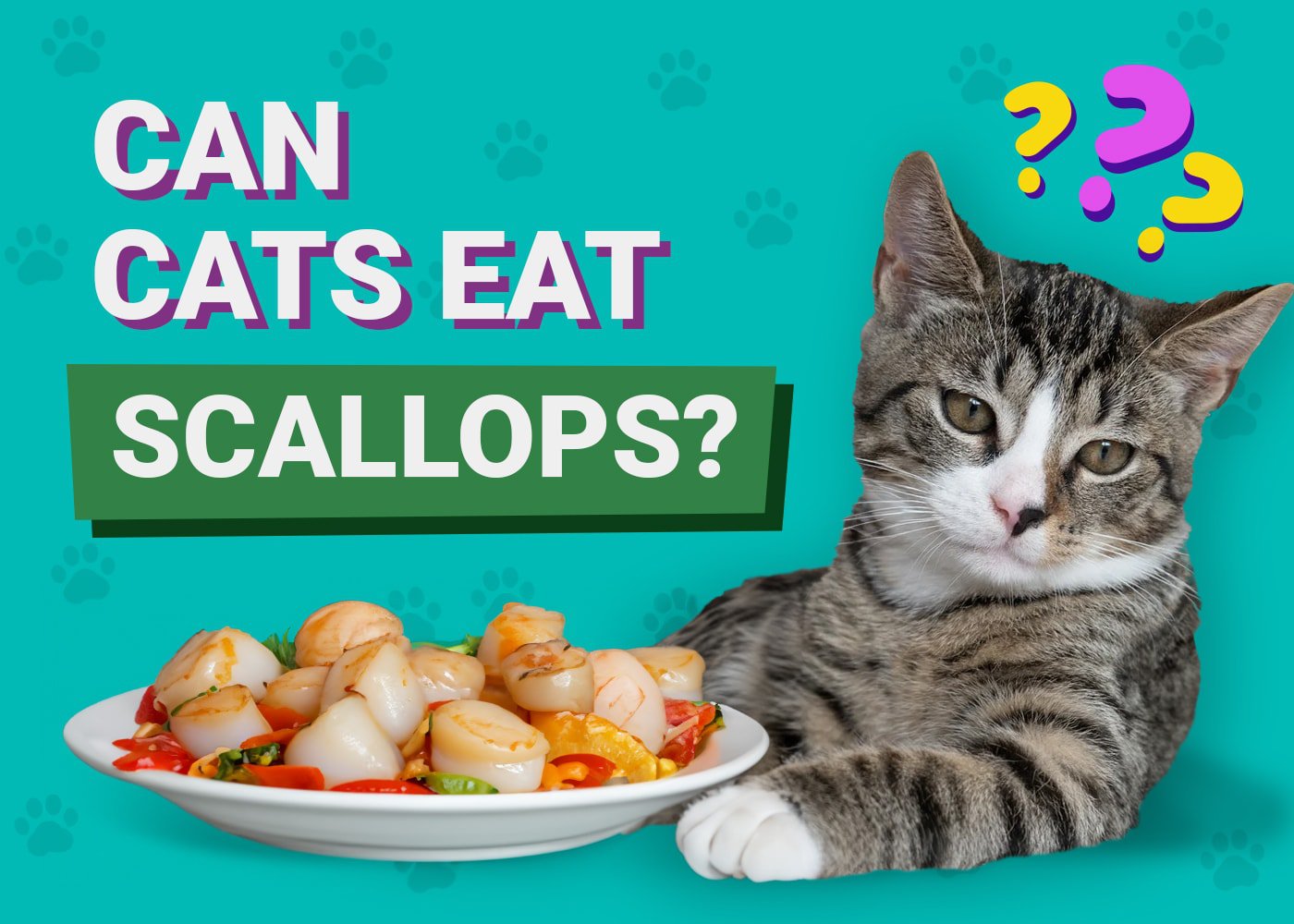VET APPROVED

The information is current and up-to-date in accordance with the latest veterinarian research.
Learn more »Click to Skip Ahead
Cats and seafood—a timeless love affair that has always centered on their adoration for fish. Yet, one cannot help but wonder if our furry companions have a taste for other underwater delicacies, like scallops. Do cats have a taste for scallops, and can they safely eat them? The answer is yes to both, although there are a few caveats.

The Risks of Raw Scallops
For humans, raw scallops can be a delicious treat. Yet, for our cat companions, it’s not the same story. In fact, it can be quite dangerous. These seafood treats might be carrying some not-so-pleasant surprises, like Salmonella or even harmful metals. This risk increases especially if the scallops are harvested from waters that aren’t exactly the cleanest.
That’s why it’s best to err on the side of caution and avoid giving cats raw scallops altogether. We want our furry family members to stick around for as long as possible, after all.
But this isn’t just about scallops. It’s about all seafood, really. Seafood can carry diseases that could seriously affect our cats. If the waters the seafood comes from are polluted, we’re talking about a potential threat to our cats’ health because of harmful metals.
So, as much as we love to share with our cats, we’ve got to remember to be cautious about what we let them eat. It might mean saying no to those pleading eyes every once in a while, but it’s all for their own good. Ensuring their safety and happiness is our number one priority, and that starts with what they’re nibbling on.

Benefits of Scallops for Cats
Feeding your cat scallops in moderation, around once or twice a week, can potentially bring numerous health benefits. Scallops are rich in protein, constituting around 80% of their composition. Additionally, they have a low fat content, making them a healthy choice for both humans and feline friends alike. So, indulge your cat every once in a while with this protein-packed treat!
Watch Out for Harmful Additions
While we might like to jazz up the taste of scallops with butter, garlic, and other spices, it’s not safe to feed our cats scallops prepared this way. Things like garlic, shallots, and onions can damage your cat’s red blood cells, potentially causing anemia. Remember, the well-being of your cat should always come before their own snacking desires.

Feeding Cats Cooked Scallops
Don’t worry! Scallops cooked just right can make for a delightful and safe snack for your fluffy companion. However, a few measures need to be taken to guarantee a perfectly enjoyable mealtime.
How to Cook Scallops for Cats
To whip up a delectable and safe scallop dish for your feline, follow these simple steps:
- Grab a regular cooking pan and preheat it on high heat.
- Retrieve your raw scallops from the refrigerator.
- Once the pan is hot, sear the scallops, flipping them every minute for an even sear.
- Cook the scallops for a total of 4–5 minutes to ensure they are well done and safe for your cat.
- Use a cooking thermometer to confirm the scallops are thoroughly cooked. Ideally, they should reach a core temperature of 115 degrees Fahrenheit. However, keep in mind that searing on high heat may result in carryover heat, bringing the scallops to around 125 to 130 degrees Fahrenheit.
- Cut the scallops into small, bite-sized pieces before serving them to your cat.


Navigating Seafood Choices
While cats may have a fondness for fish, it’s essential to be discerning about their seafood options. Commercially canned salmon, commonly found in cat and human food, may contain high levels of salt and preservatives that can disrupt your cat’s digestive system. It’s advisable to avoid feeding your cat canned salmon or other fish that are farm-raised due to potential toxin exposure.
A Balanced Cat Diet
Keeping our cherished cats nourished with a balanced diet is crucial for their health and vitality. Seafood is undeniably a treat they relish, but we shouldn’t let it overshadow our cats’ overall nutritional requirements. Their diet should primarily be based on quality protein sources, such as chicken and beef, which deliver a varied array of necessary nutrients. By mixing in a variety of protein-rich options in their diet, we help our cats avoid becoming too dependent on just fish.
Cats, like us, require a diverse diet to support their growth, energy levels, and overall health. While fish is a good choice, it isn’t the sole contender in their dietary lineup. Combining fish with other protein sources guarantees our furry pals receive all the vital amino acids and vitamins they need for good health.
Moreover, different proteins provide unique benefits, making it wise to vary their meals. For instance, chicken supplies lean protein, and beef provides crucial minerals like iron and zinc. By offering a diverse range of proteins, we respect their natural tendencies as obligate carnivores and shield them from possible dietary imbalances that might occur if they only depend on one type of food.

Conclusion
Scallops can offer your cat a tantalizing seafood experience when prepared properly. By opting for cooked scallops and avoiding harmful additives, you can ensure a safe and enjoyable meal for your feline friend. Remember, moderation is key, and incorporating a variety of proteins into your cat’s diet is vital for their overall health. So, dive into the sea of culinary delights and treat your furry companion to a seafood feast they won’t forget!
Featured Image Credit: meineresterampe, Pixabay












